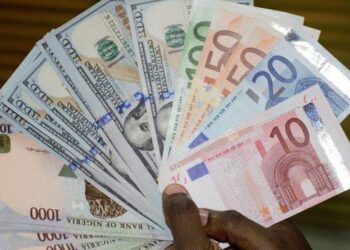Spot gold surged past the $4,000-per-ounce mark for the first time in history on Wednesday, as concerns over the U.S. economy, a looming government shutdown, and heightened geopolitical tensions triggered a new wave of investor demand for safe-haven assets.
The milestone marks a dramatic rise for bullion, which traded below $2,000 just two years ago, delivering returns that now outpace equities this century.
Gold prices have soared by more than 50% in 2025, fueled by global trade uncertainties, questions surrounding the Federal Reserve’s independence, and growing anxiety over U.S. fiscal stability.
Safe-Haven Rush Accelerates Amid U.S. Economic and Political Uncertainty
Analysts say the rally has intensified amid mounting fears of a government funding impasse in Washington and the start of the Fed’s monetary easing cycle, which has weakened real yields and boosted demand for non-interest-bearing assets like gold.
Investor appetite has been further reflected in strong inflows into bullion-backed exchange-traded funds (ETFs), which recorded their largest monthly gain in more than three years in September.
“Gold breaking $4,000 isn’t just about fear, it’s about reallocation,” said Charu Chanana, strategist at Saxo Capital Markets Pte. “With economic data on pause and rate cuts on the horizon, real yields are easing, while AI-heavy equities look stretched. Central banks built the base for this rally, but retail and ETFs are now driving the next leg.”
As of 2:02 p.m. in Singapore, gold was trading at $4,028.13 per ounce, after reaching an intraday high of $4,037.10, its strongest level on record.
Central Banks, Inflation Fears Fuel Long-Term Gold Momentum
Historically, gold prices have climbed sharply during periods of financial stress. The metal crossed $1,000 an ounce in the wake of the 2008 global financial crisis, breached $2,000 amid the COVID-19 pandemic, and surpassed $3,000 during U.S. trade tensions in early 2020.
Now, the move past $4,000 comes amid political interference in monetary policy, including reported tensions between U.S. President Donald Trump and the Federal Reserve, with attempts to influence Chair Jerome Powell and remove Governor Lisa Cook, developments seen by markets as a challenge to the Fed’s independence.
Gold is currently on pace for its best annual performance since the 1970s, when high inflation and the end of the gold standard triggered a historic 15-fold surge in the metal’s value.
“Buying more gold is always good. It remains one of the safest and most reliable stores of value,” said Professor Joseph Nnanna, Chief Economist at the Development Bank of Nigeria, during the Comercio Partners H2 Economic Outlook Forum in Lagos.
“When central banks source gold domestically, it stimulates the entire mining value chain, from raw extraction to refining and jewellery manufacturing. That catalyzes industrialisation,” he added.
What You Should Know
Experts say the ongoing rally also reflects a strategic rebalancing of global reserves, as central banks diversify away from the U.S. dollar following Western sanctions and the freezing of Russia’s foreign exchange reserves in 2022.
“Our ability to settle international transactions is increasingly influenced by political decisions made in America. This vulnerability is pushing countries to seek alternatives, with gold being a leading option,” said Zeal Akaraiwe, CEO of Graeme Blaque Advisory.
- He added that the shift signifies a move toward de-dollarisation, as policymakers worldwide build stronger buffers against economic shocks and geopolitical risk.
- Central banks, long net sellers before the 2008 financial crisis, have now become major gold buyers, doubling their purchases in recent years as inflation, trade fragmentation, and political risk reshape the global financial order.






















